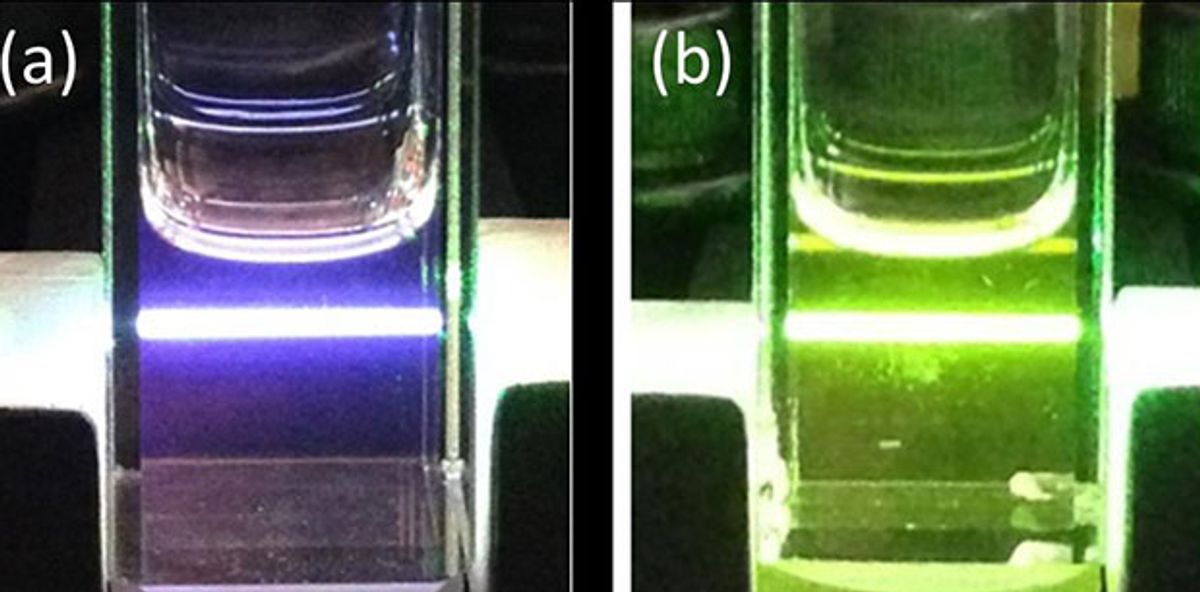Solar cell efficiencies could increase by 30 percent or more with new hybrid materials that make use of the infrared portion of the solar spectrum, researchers say.
Visible light accounts for under half of the solar energy that reaches Earth's surface. Nearly all of the rest comes from infrared radiation. However, solar infrared rays normally passes right through the photovoltaic materials that make up today's solar cells.
Now scientists at the University of California, Riverside, have created hybrid materials that can make use of solar infrared rays. The energy from every two infrared rays they capture is combined or “upconverted” into a higher-energy photon that is readily absorbed by photovoltaic cells, generating electricity from light that would normally be wasted.
The hybrid materials are combinations of inorganic semiconductor nanocrystals, which capture the infrared photons, and organic molecules, which help combine the energy from these photons together into an upconverted photon. In experiments, lead selenide nanocrystals captured near-infrared photons, and the organic compound rubrene emitted visible yellow-orange photons.
The researchers noted that lead selenide nanocrystals and rubrene were relatively inefficient at upconversion. However, in experiments with a hybrid material made of cadmium selenide nanocrystals and the organic compound diphenylanthracene, which absorbs green light and emits violet light, the investigators could boost upconversion up to a thousandfold by coating the nanocrystals with anthracene, a component of coal tar. This suggests that similar coatings on lead selenide nanocrystals might boost their upconversion efficiency as well.
The scientists added that the ability to upconvert two low energy photons into one, high-energy photon has potential applications in biological imaging, high-density data storage, and organic light-emitting diodes (OLEDs). They detailed their findings online July 10 in the journal Nano Letters.
Charles Q. Choi is a science reporter who contributes regularly to IEEE Spectrum. He has written for Scientific American, The New York Times, Wired, and Science, among others.



